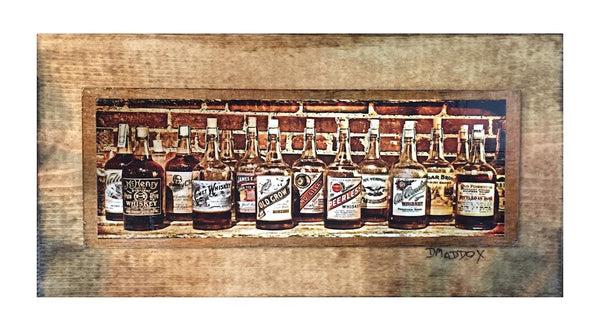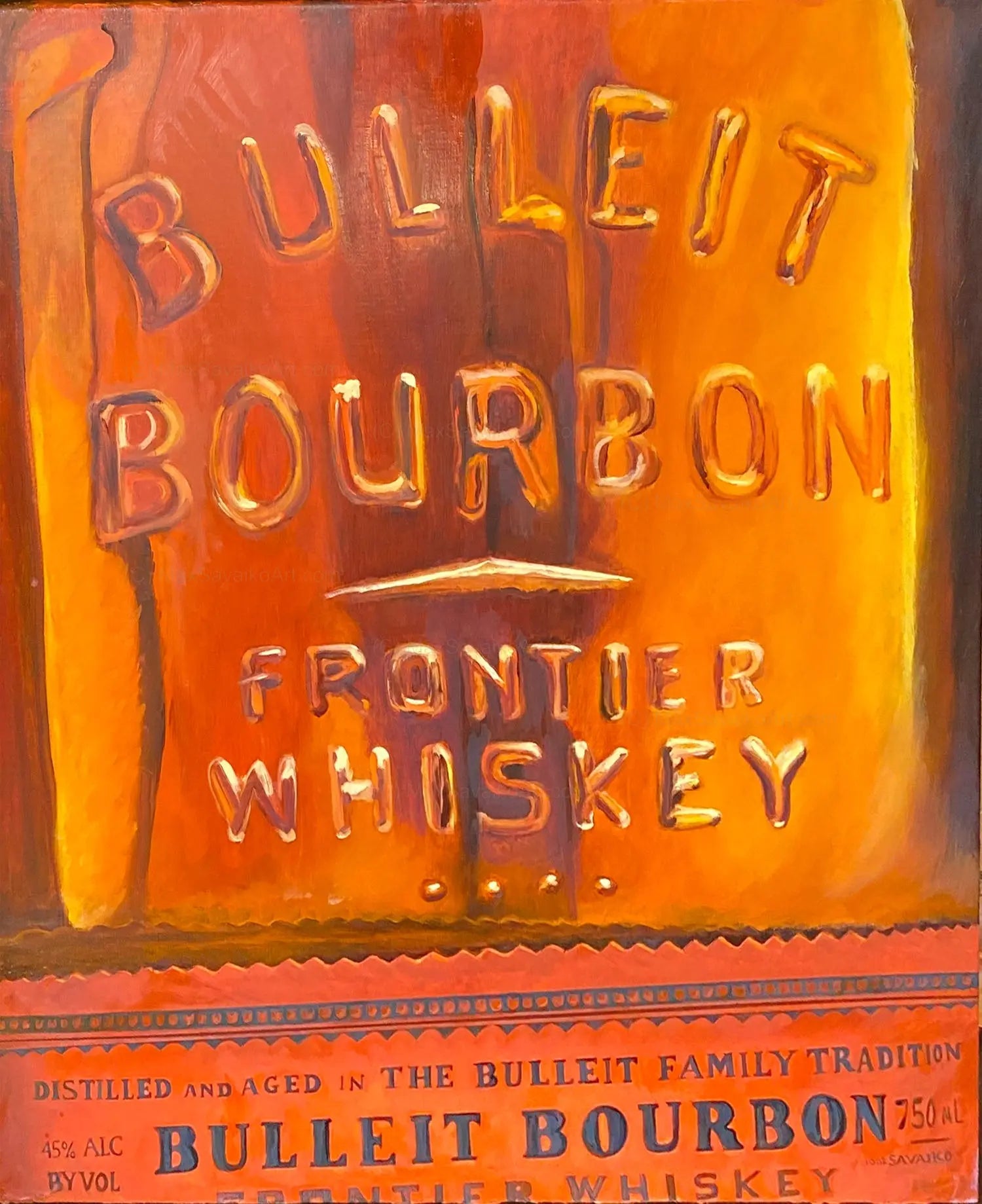The Relevance of Whiskey Art in Celebrating Heritage and Craftsmanship in the Beverage Industry
The elaborate relationship in between whiskey art and the party of heritage and workmanship within the beverage sector can not be overemphasized. Through attentively developed labels and containers, scotch brands envelop their historic roots and the artisanal skills that specify their production methods. This artistic dimension not only improves market allure but also acts as an avenue for cultural narration, fostering a much deeper connection in between the customer and the craft. As we check out the different elements of this subject, appealing concerns about the influence of modern patterns on conventional techniques arise, prompting more assessment.
The Historic Origins of Whiskey
At the heart of whiskey's appeal exists an abundant tapestry of historical roots that map back to ancient people. The beginnings of bourbon can be linked to the distillation techniques of the Sumerians and Babylonians around 2000 BCE, where early kinds of fermented grain beverages started to emerge. It was in the Center Ages that the art of purification advanced dramatically, especially in Ireland and Scotland, leading to the creation of scotch as we recognize it today.
The term "scotch" itself originates from the Gaelic word "uisce beatha," implying "water of life." This phrase highlights the cultural relevance of scotch in Celtic societies, where it was typically connected with rituals, events, and communal bonding. By the 15th century, distillation came to be an identified craft within monastic neighborhoods, leading the way for the establishment of lawful distilleries.
As trade paths increased, whiskey's popularity expanded, going beyond local boundaries and capturing the interest of aficionados worldwide. Whiskey Art. This historic journey shows not only the craftsmanship behind scotch manufacturing but likewise its essential role in social and social contexts, marking it as a significant drink throughout history
Artistic Expression in Branding
Whiskey branding stands as a compelling crossway of creativity and business, where aesthetic identification plays a vital duty fit consumer perception. The visual appeals of scotch labels, product packaging, and advertising and marketing products mirror not only the brand name's tale but additionally its core values and heritage. Through artistic expression, distilleries share a story that resonates with customers, evoking emotions and sparking connections.
Making use of shade, typography, and images in branding serves to distinguish items in a saturated market. Conventional themes may evoke a feeling of credibility and workmanship, while modern layouts can indicate innovation and forward-thinking. This calculated creative instructions improves brand name recognition and loyalty, permitting customers to forge a personal relationship with the whiskey they select.
Furthermore, imaginative expression in branding typically functions as an event of local heritage. Distilleries frequently integrate neighborhood icons or historical recommendations into their styles, developing a local color that welcomes consumers to take part in a broader social experience. Inevitably, the virtuosity behind bourbon branding not only improves visual charm but likewise enhances the overall narrative of the brand name, cultivating a deeper admiration for the craftsmanship and heritage ingrained in each bottle.
Craftsmanship in Container Layout
The virtuosity obvious in scotch branding prolongs beyond aesthetic identity to include the craftsmanship associated with bottle style. Each container acts as a vessel not just for the spirit within, yet additionally for the story it outlines its quality, tradition, and origin. The layout process requires thorough attention to information, as components such as product, form, and closure add significantly to the total understanding of the scotch.
Craftsmanship in bottle style involves selecting high-grade glass that can improve the bourbon's color and clarity, while likewise supplying a tactile experience for the consumer. The silhouette of the bottle must be both visually enticing and practical, typically reflecting the heritage of the brand. Lots of distilleries opt for unique shapes or printed logo designs that evoke a sense of authenticity and history.
Additionally, the label style and typography play a crucial function in connecting the brand name's narrative. Whiskey Art. A well-crafted container not only astounds the consumer's eye yet additionally reinforces the brand name's dedication to high quality and custom. This way, the craftsmanship of bottle layout comes to be an important element of the whiskey experience, combining virtuosity with an extensive respect for heritage
Social Relevance of Bourbon Art
Commemorating tradition and workmanship, the social value of bourbon art goes beyond plain looks, linking with the historic and social stories of the areas where it stems. Each bottle works as a canvas, showing the one-of-a-kind tales, mythology, and customs that have formed neighborhood whiskey-making techniques. The complex layouts commonly mirror the heritage of the distillers, incorporating signs and concepts that reverberate with the society and worths of their communities.

In enhancement, whiskey art plays a vital role in common gatherings and celebrations, acting as a substantial link between people and their shared experiences. By appreciating the artistry in bourbon product packaging, consumers cultivate a deeper understanding and regard for the craft, ultimately enriching their pleasure of that site the beverage itself.
Modern Trends in Whiskey Presentation
In recent times, the discussion of bourbon has progressed to mirror contemporary tastes and patterns while still recognizing standard craftsmanship - Limited Edition. Distilleries are increasingly concentrating on aesthetic elements that boost the overall alcohol consumption experience, connecting the space in between heritage and modernity
Cutting-edge container designs have emerged, usually integrating sustainable materials and imaginative tags that tell compelling tales. Lots of brands now collaborate with neighborhood musicians, infusing their items with special visual expressions that resonate with consumers. Additionally, limited-edition launches are typically packaged in collectible containers, including worth and charm for aficionados.

Verdict
In final thought, scotch art serves as a crucial avenue for sharing the heritage and craftsmanship intrinsic in the drink market. With elaborate branding, innovative container styles, and culturally substantial creative elements, whiskey brands properly honor their customs and connect with consumers. This artistic story not only elevates the appreciation of whiskey yet likewise reinforces area identity and satisfaction amongst producers. Inevitably, bourbon art plays a necessary duty in preserving and celebrating the rich social tapestry of whiskey-making.


Workmanship in container layout entails picking high-grade glass that can improve the bourbon's shade and clearness, while also supplying a responsive experience for the consumer. In this means, the workmanship of container design becomes a crucial aspect of the bourbon experience, combining creativity with an extensive regard for heritage.
In verdict, whiskey art serves as a vital channel for sharing the heritage and workmanship integral in the drink industry.
Comments on “Realism Art in the Whiskey Industry: Showing Moments of Distillation”